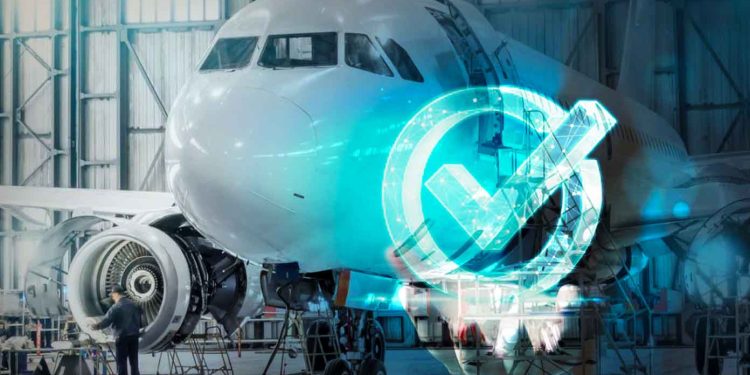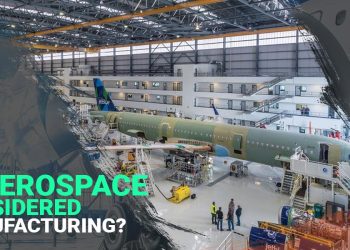The rapid advancement of technology will push the aerospace industry to grow with time. The aerospace industry is an ever-evolving field, and as technology progresses, more powerful and efficient ways to explore the skies will be implemented.
But to push these innovations forward, companies in the aerospace industry must also meet the demands of ever-changing demands of safety and quality standards.
These safety standards cover a plethora of variables in the industry, including airport safety, equipment management, dealing with fraudulent purchases, and so on. These standards were developed in 1941 and contain over 1,400 operational standards.
Read on to know more about the top aerospace industry standards.
Top Aerospace Industry Standards Are As Follows
1. ISO Standard AS 9100 D
The AS 9100 D comprises specific quality system management standards that assure high quality to the greatest extent possible. This quality assurance standard is so thorough that it can be used for all levels of supply chains around the world.
This standard is obligatory for everyone from primary and secondary aerospace parts suppliers to IAQG and OEM accredited aircraft repair and maintenance units. Primarily developed for the space, defense, and aviation industries, the AS 9100D can ensure lesser costs, better quality, and improved delivery performance.
All this is possible due to the exemplary implementation of a quality management system and the elimination or reduction of organization-unique requirements.
2. ISO Standard AS 9110 C
Primarily developed for the civil and military aviation industry organizations that provide maintenance services, the AS 9110 can also be used for other industry sectors. Generally, this is only done when additional requirements over the ISO 9001 system are needed.
The AS 9110 C essentially includes ISO 9001:2015 quality management system requirements with additional continuing airworthiness industry and civil/military aviation maintenance requirements.
3. ISO Standard AS 9120 B
The ISO AS 9120 B specifies aerospace requirements for the stockiest distributors. This standard defines specific requirements for suppliers and distributors who provide components to the supply chains responsible for manufacturing aerospace and defense industry products.
This standard essentially focuses on traceability of materials, protection, and supervision of the stored materials, and finally, shaping the method and tracking of the splitting of materials. All these requirements comply with the specifications, and records must be maintained to be met.
4. ISO Standard AS 5553 A
Initially, an increasing volume of counterfeit electronic parts made their way into the aerospace supply chain. It posed massive performance, safety, and reliability risks. The ISO AS 5553 A standard was introduced in order to deal with such counterfeit parts.
This document has seen a subsequent expansion to accommodate fraudulent parts risk mitigation across multi-sector electronic supply chain industries. The expansion also included the specific requirements and methods to mitigate the risk of receiving and installing fraudulent electronic parts.
The AS 5553 standard paired with the ISO 9001:2015 fulfills all the requirements of the Aerospace ISO Standard.
In order to meet the customer requirements, organizations must make sure that they continuously improve on the safety and reliability of their products to meet or exceed the customer and the regulatory requirements of the aerospace certification.
Although, the globalization of the aerospace industry and the diversity of the country-specific requirements have made it tedious to meet this objective. That makes it very difficult for end-product organizations who have purchased supplies from all over the world to check the integrity and quality of those supplies.
Therefore, the AS 5553 A standard was put in place to check the global supply chain of the aerospace industry.
Also Read: Transformation of the Aerospace Industry by Big Data
Benefits of Aerospace Industry Standards
Aerospace industry standards cover various areas, such as configuration management, configuration management, post-delivery support, raw material testing, etc.
Complying with quality management standards can yield aerospace suppliers and manufacturers many benefits. They are as follows.
1. Assessing International Markets
The AS standards are recognized in the global aerospace industry. Therefore, having certification means you can compete in international markets. Moreover, it also provides you with instant credentials known and trusted by stakeholders.
2. Streamlining Processes and Planning for Growth
The AS industry standards are scalable to accommodate increased demand whenever necessary. That is because they are based on a continuous improvement cycle.
Therefore, a certified quality management system will help you prepare for future growth such that it is viable over the long term. Consequently, you will be able to run a much more lean and profitable business.
3. Managing Risk of Counterfeit parts
Counterfeit parts are stirring up a lot of trouble in the aerospace and defense industries. These parts can leave organizations exposed to risk and liability. That is why AS 9100 D puts forward requirements that enhance accountability and deal with these issues much more effectively.
Contributions of the Aerospace ISO Standard Towards Operational Risk Management
Suppose your organization complies with the Aerospace ISO Standards. In that case, you will have planned, implemented, and are now in control of a process capable of managing operational risks to meet the applicable requirements. For that, you must:
- Assign responsibilities for operational risk management.
- Clearly define the risk assessment criteria. For instance, likelihood, risk acceptance, consequences, and so on.
- Identify, assess and communicate risks throughout all operations.
- Identify, implement, and manage necessary actions to mitigate risks that go overboard the defined risk acceptance criteria.
- Accept risks remaining post the implementation of the mitigation action.
Conclusion
As technology advances, the aerospace industry will keep growing at an alarming pace. Although growth comes with risks, these risks result in organizations incurring heavy losses.
That is why the Aerospace ISO Standards needed to be put in place so that organizations in the aerospace industry can mitigate these risks and operate and maximum efficiency.







